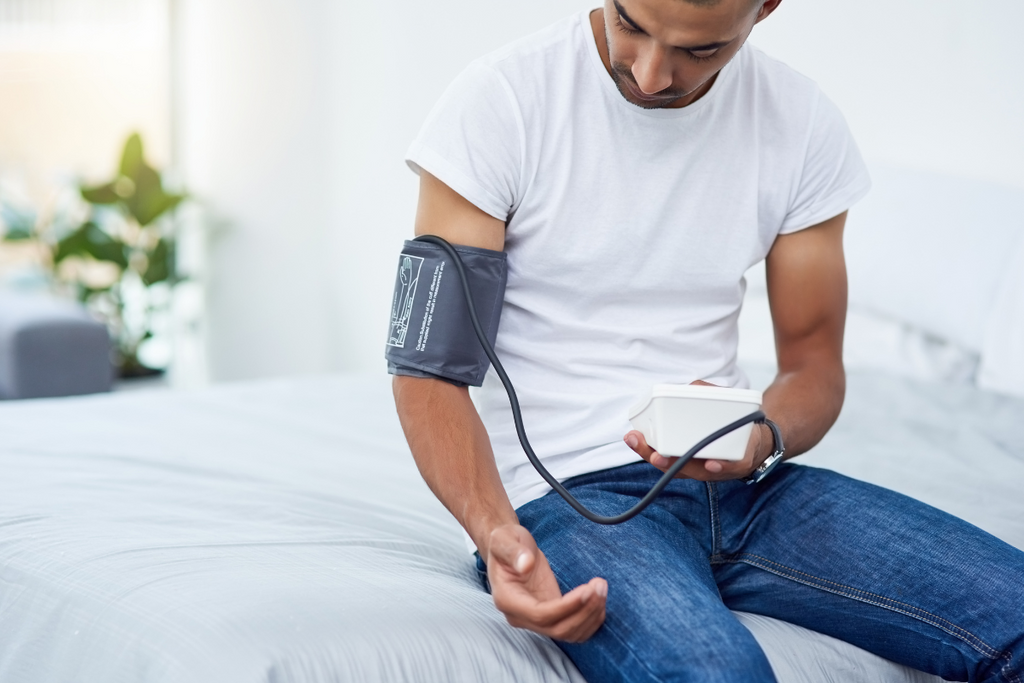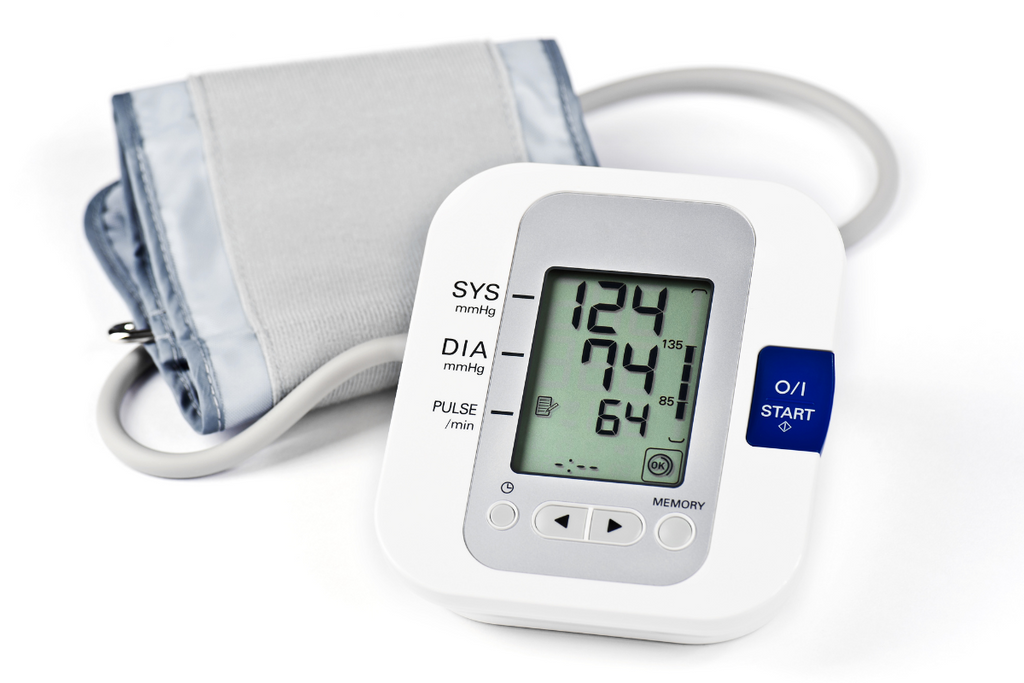Do you suffer from high or low blood pressure? Today, one in three Australians experience problems with high blood pressure, and many more have low blood pressure without even realising. So, how do you know if you have high blood pressure? What are the signs of low blood pressure? And, where can you buy a blood pressure machine? Keep reading our Blood Pressure FAQ to find out!

What is Blood Pressure?
Blood pressure, or BP, refers to the pressure of the blood in someone's circulatory system. With each heartbeat, blood is pumped around the body through over 90,000 kilometres of blood vessels! As this happens, blood pushes against these blood vessels - creating pressure. A person’s blood pressure is able to shed light on the health of their heart and arteries. Blood pressure constantly changes through the day depending on your activity, body position, sleep and more. The higher the BP, the harder the heart pumps.
How Do You Measure Your Blood Pressure at Home?
Taking a blood pressure reading at home is very simple. For best results, use a clinically validated, TGA/FDA approved BP monitor to trust your reading is accurate. Always use your device in line with the manual’s directions. Generally, blood pressure readings are taken:
- While you are relaxed
- On an empty bladder
- Before eating and at a time away from drinking coffee or smoking
- In a sitting position with your feet flat on the floor
- Wearing a short sleeve shirt or your shirt rolled up on testing arm
- A well fitted BP machine cuff secured to the top half of your arm, at about heart level
It is recommended to take two readings every time, one or two minutes apart. Most people take their blood pressure at a similar time each morning and night. Consult with your doctor as to when it is recommended to take your personal BP measurements.
How Do You Read Blood Pressure?
Blood pressure is measured by a BP machine in units of millimetres of mercury (mmHg). It is measured by taking both the highest and lowest reading - giving two figures. The highest reading is known as “systolic” and is displayed above the lowest reading, known as “diastolic.” The systolic measurement is the pressure in the artery as the heart contracts. The diastolic measurement is the pressure in the artery when the heart is relaxing and filling with blood.

What is a Healthy Blood Pressure Reading?
A blood pressure reading of 120/80 mmHg or lower is considered within normal range. Maintaining a healthy diet and good exercise regime can keep blood pressure within its healthy range.
What is Hypertension? What is a High Blood Pressure Reading?
Hypertension is the term for high blood pressure - a serious medical condition that can lead to serious problems, including heart attack, heart failure, stroke and kidney disease. According to the World Health Organisation, hypertension is diagnosed when someone’s blood pressure reading is that of 140/90 mmHg or greater, on two different days. In addition, hypertension can typically be separated into three categories:
- Stage 1 Hypertension - A systolic pressure ranging from 130 to 139 mmHg or a diastolic pressure ranging from 80 to 89 mmHg
- Stage 2 Hypertension (classed as Severe Hypertension) - A systolic pressure of 140 mmHg or higher or a diastolic pressure of 90 mmHg or higher
- Hypertensive Crisis (requires urgent medical attention) - A systolic pressure readings of over 180 mmHg or a diastolic pressure of 120 mmHg or higher
What Causes High Blood Pressure?
There are multiple things that can increase someone’s chances of developing hypertension, including:
- Family history
- Eating patterns - particularly salty foods
- Alcohol intake
- Smoking
- Weight
- Physical activity
Secondary hypertension is the term for high blood pressure that's caused by another medical condition. Secondary hypertension can come about from conditions such as:
- Sleep apnoea
- Kidney problems
- Thyroid problems
- Adrenal gland tumours
- Defects in blood vessels from birth
- Certain medications
- Illegal drugs
- Alcohol abuse/chronic alcohol use
- Pregnancy
What Are High Blood Pressure Symptoms?
Unfortunately, there are usually minimal or no signs of high blood pressure until it is at a critical stage. Hypertension symptoms can take years to develop into levels that are obvious enough to recognise. Regular checks by a doctor and the home use of a blood pressure machine are the best ways to monitor hypertension. When symptoms do appear, they can include:
- Early morning headaches
- Nosebleeds
- Irregular heartbeat
- Lightheadedness
- Changes in vision
- Buzzing in ears
- Fatigue
- Nausea
- Vomiting
- Confusion
- Anxiety
- Chest pain
- Tremors
Due to the invisible nature of hypertension, doctors usually will take a person’s blood pressure at each visit, and may recommend additional checkups if you have a family history of high blood pressure. Consult your doctor if you feel you have the above symptoms due to high blood pressure.
|
|
iHealth TRACK Connected Blood Pressure MonitorWith the press of one button, get accurate blood pressure readings at home with a TGA approved BP monitor! |
What is White-Coat Hypertension?
Interestingly, White-Coat Hypertension (also known as the white-coat effect or white coat syndrome) is high blood pressure that only occurs when a person is in a medical setting, such as at a doctor’s appointment. While this can sometimes be solely caused by anxiety from being at a medical appointment, it can be a precursor of true hypertension.
How Do I Lower My Blood Pressure?
At times medication may be necessary to lower blood pressure. However, there are also some simple lifestyle changes that can be made to assist in keeping blood pressure at bay! The main one is maintaining a healthy diet. Making sure to include a good balance of vegetables, fruit, wholegrains, nuts, seeds and low fat dairy in daily meals has shown to help prevent high blood pressure. In addition, lowering sodium and saturated fat intake helps keep your heart and blood vessels healthy. Flavour meals by adding plenty of herbs instead of salt.
Regular exercise is another great way to lower a high blood pressure reading. Current Australian guidelines suggest that adults do 2.5 to 5 hours of moderate intensity physical activity each week. This could include things like a brisk walk, but also other activities such as golf, mowing the lawn or swimming.
Of course, maintaining a healthy weight and BMI (body mass index), quitting smoking and limiting alcohol intake are also changes that are proven to benefit your blood pressure as well as your overall health. Water is the best thing for you to drink, so make sure to have plenty of it each day!

What is Low Blood Pressure (Hypotension)? What is a Low Blood Pressure Reading?
Hypotension is the term for low blood pressure, and is a BP reading of 90/60 mmHg or lower. It is most common in older people, and is usually more serious as it increases their risk of falling. Hypotension can be separated into two categories:
- Absolute Hypotension: A resting blood pressure of 90/60 mmHg or less
- Orthostatic Hypotension (also known as Postural Hypotension): A drop in blood pressure within three minutes of you standing up from a sitting position. The drop must be 20 mmHg or more for your systolic pressure and 10 mmHg or more for your diastolic pressure.
What Causes Low Blood Pressure?
There can be multiple causes of low blood pressure, including:
- Orthostatic hypotension - lack of blood flow from standing too quickly
- Central nervous system diseases
- Low blood volume/Blood loss
- Cardiac arrhythmias
- Heart attack
- Collapsed Lung
- Anaphylaxis
- Sepsis
- Some medications
- Alcohol
- Illegal drugs
- Pregnancy - first and second trimesters
- Extreme temperatures
What Are The Signs/Symptoms of Low Blood Pressure?
Signs of low blood pressure can be similar to those of high blood pressure. Like the symptoms of hypertension, the signs of hypotension can go unrecognised and may not even be noticeable. When they do appear, symptoms of hypotension include:
- Dizziness
- Fainting
- Nausea
- Vomiting
- Changes in vision
- Fast, shallow breathing
- Fatigue
- Weakness
- Feeling sluggish
- Confusion
- Agitation
- Other behavioural changes
Consult your doctor if you feel you have the above symptoms due to low blood pressure.
What is a Good BP Monitor? What Blood Pressure Machines Have ECG Capability?
Today, BP monitors are equipped with a variety of features, with some including wireless design, ECG capability, digital stethoscope, bluetooth and app-integration. It’s always important to use validated BP machines that have been tested for accuracy. FitTrack Australia stocks a wide range of clinically validated and TGA approved blood pressure monitors trusted by medical professionals. One of these - voted by Forbes Health as the “Best Blood Pressure Monitor 2022” is the clinically validated and FDA approved iHealth TRACK Connected Blood Pressure Monitor - which uniquely features colour coded blood pressure readings for easy evaluation.
The Withings BPM Core blood pressure monitor is another clinically validated and TGA approved BP machine. It provides users not only their blood pressure measurement - but also electrocardiogram (ECG) readings to help detect atrial fibrillation, and valvular heart disease (VHD) detection via its digital stethoscope.
These blood pressure devices and others record all of your readings and store them through their compatible apps for future assessment - how handy!
 |
Withings BPM Core - Wireless Blood Pressure Monitor with ECG + Digital StethoscopeThe world's first Blood Pressure Monitor with ECG and Digital Stethoscope capabilities - take readings with ease from home |
The Takeaway
If you do suffer from blood pressure abnormalities, you are not alone. Although it can at times lead to more serious health conditions, there are various methods of treatment and ways to monitor blood pressure. If you suspect you have high or low blood pressure, consult with your doctor to get on track to managing your symptoms.
Resources:
- Betterhealth Victoria
- WHO - Hypertension
- Health Direct - High Blood Pressure
- Health Direct - Low Blood Pressure
- Heart.org
- Victor Chang - High Blood Pressure
- Healthline - White Coat Hypertension
- Cleveland Clinic - Hypotension
- Heart Foundation - Foods to Help Lower Blood Pressure
- CDC - Measure Your Blood Pressure

